The Natural Health Guide to Food Additives
I get asked all the time about various food additives that my clients encounter when they read the labels on food products. That is why my team did extensive research and created this guide to help navigate the most commonly used food additives on the market. This guide to food additives is not a complete list but covers the vast majority of what you will see.
Grocery shopping is far more mentally exhausting today than you probably remember when you watched your parents from the front seat of the grocery cart. With almost any product you pick up in the store you have to question the impact the food’s ingredients will have on your health. Ingredient lists rarely contain few enough words to be counted on one hand and even the produce department has been sprayed, bathed, or gassed with some food additive.
To date, there are 3,968 FDA-approved food additives that flood the market in the United States (2). See the complete list for yourself here. This number is mind boggling and also impossible to keep track of. The list below will help you get a grasp of what good additives you might be eating regularly, which you may want to avoid, and the additives that currently pose the least risk to your health. Another good source for this info is Stewart at TheGoodGut and his piece on addictive food additives here
Additive Terminology:
Before you read on, here is a brief indication of frequently used food additive terms:
Coloring Agent: Food dyes, natural or artificial, are added to food to make the product appear more aesthetically pleasing or familiar to the consumer.
Preservative: Added to foods to inhibit the spoilage rate due to pathogenic substances such as mold.
Bulking Agent: Incorporated to increase the quantity of food products.
Thickeners: This added ingredient helps to reduce the volume of liquid thereby stiffening the texture of the food.
Stabilizers: Adds firmness and texture to foods. Also referred to as gelling agents.
Emulsifiers: Allows non-fat and fatty substances to mix together that would remain separate under normal circumstances.
Meat Tenderizer: This breaks down the tough muscle protein found in meat.
Acesulfame Potassium:
Food Sources: Common in many dieting products including beverages, dairy products, baked goods, sauces, and dips.
Intended Purpose: Sugar substitute and flavor enhancer.
Safety Concern: This sugar substitute is 200 times more potent than table sugar. Found in brands like Sweet One and Sunett, acesulfame K has had limited testing for human consumption. However, reports of reduced antioxidant benefits and the inability of the body to maintain the “good” HDL cholesterol have been reported.
Avoid this artificial sweetener and opt for healthier options such as stevia, honey, and maple syrup.
Annatto:
Food Sources: Dairy products such as cheeses, butter, and creams. Also found in baked goods, beverages, and corn starch.
Intended Purpose: Provides a yell-orange color. Used as a bleaching and coloring agent.
Safety Concern: Consumption of this food is generally safe. Annatto added butter may appear to some to have the vitamin K richness as do butters produced from pasture-raised cows but they, in fact, contribute no vitamin nutrition. The greatest concern of Annatto is in regard to the solvents required to extract the colorant.
Annatto is extracted from the seeds of the Bixa Orellana bush using a variety of chemicals including acetone, hexane, trichloroethylene, various alcohols, and methylene chloride. (2)
Despite the solvents during the manufacturing process, the originating plant has pharmacological properties that have been used in history for various health applications. Annatto extract may provide some of these antioxidant components but further studies are needed. (4)
Artificial Flavoring:
Food Sources: Snacks, cheeses, coffee, cereals, baked goods, peanut butter, prepared foods, oil, juices, spices, and a variety of other products.
Intended Purpose: These flavors are intended to mimic or “enhance” the taste of food by mimicking the flavors of the natural product.
Safety Concern: Most artificial flavorings have limited, if any, research testing their toxicity levels. It is best to avoid artificial flavoring until toxicological studies are completed.
Chemicals such as diacetyl have been found to cause respiratory issues and this artificial flavoring is commonly found in microwave popcorn to mimic the taste and smell of real butter.
Other flavorings such as alpha-diketone are also in food and may trigger airway fibrosis in animals. (5)
As little quantity as artificial flavorings may be used in foods, their prevalence and exposure are almost ubiquitous.
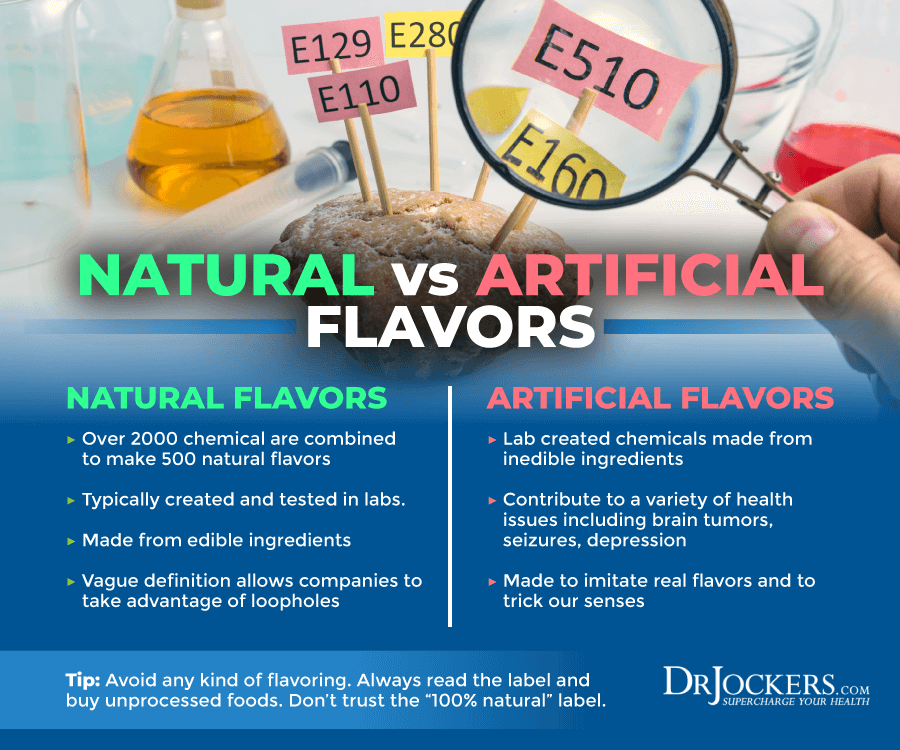
Ascorbic Acid, Ascorbyl Palmitate:
Food Sources: Processed foods such as cured meats and beverages.
Intended Purpose: Used as a preservative and color stabilizer.
Safety Concern: These additives are naturally found in fruits and vegetables and are often referred to as antioxidants and better known as vitamin C. Toxicity studies show that the additive is generally safe and well tolerated by humans.
In fact, in some diets lacking fruits and vegetables rich in natural ascorbic acid, this additive may be beneficial to supplement the diet. (2)
Ascorbic acid and ascorbyl palmitate, which is a compound that has been broken down from ascorbic acid, may also have an additional benefit.
These compounds help to inhibit the conversion of nitrites found in food to nitrosamines. You will later read about the carcinogenic health hazard of nitrosamines.
Aspartame:
Food Sources: Typically found in diet products including soda, water, and “zero-calorie” foods.
Intended Purpose: Enhance the sweetness of a product without added sugar. Aspartame is a sugar substitute sold as Equal and NutraSweet.
Safety Concern: The overall consensus of aspartame’s safety is that it is dangerous. Unless consumed in extremely minor quantities, artificial sweeteners increase the risk of leukemia, lymphoma, and brain tumors and are likely associated with metabolic illnesses such as diabetes. (6)
Other safety concerns for aspartame regard the inability of some people to break down its components. Aspartame contains phenylalanine (an amino acid found in aspartame) which cannot be metabolized by some individuals.
For this reason, pregnant and nursing women should avoid the additives in foods and is not recommended for the consumption of infants. (10)

Astaxanthin:
Food Sources: Most known for its use in farmed salmon, trout, and shrimp. Also found in carbonated beverages, cereals, gums, coffee, tea, frozen dairy desserts, processed vegetables, candies, baking mixtures, and bread rolls.
Intended Purpose: The coloring agent intended to produce a natural pink flesh in foods that would be developed under natural dieting circumstances. If you are looking for this additive on your ingredient list, understand why you will not find it.
Naturally found in nature, this color additive does not have to be listed because it is classified as an “unimportant color”.
Safety Concern: Astaxanthin is a fat soluble red pigment that provides none of the added benefits that this natural antioxidant color vitamin A would provide. Natural astaxanthin decreases the risks for many disorders and diseases by acting as a free radical scavenger.
Due to the compound’s health benefits when found in nature, many people assume artificial astaxanthin can provide the same properties.
However, compared to the natural content of astaxanthin found in wild sourced fish, synthetic astaxanthin can be used in concentrations up to 80% more than what is naturally found. This artificial form is produced from coal tar.
Until testing is clear on whether or not the use of synthetic astaxanthin is associated with adverse health effects, especially when used in abnormal concentrations than what is normal, you are best sticking with wild caught fish. (2, 10)
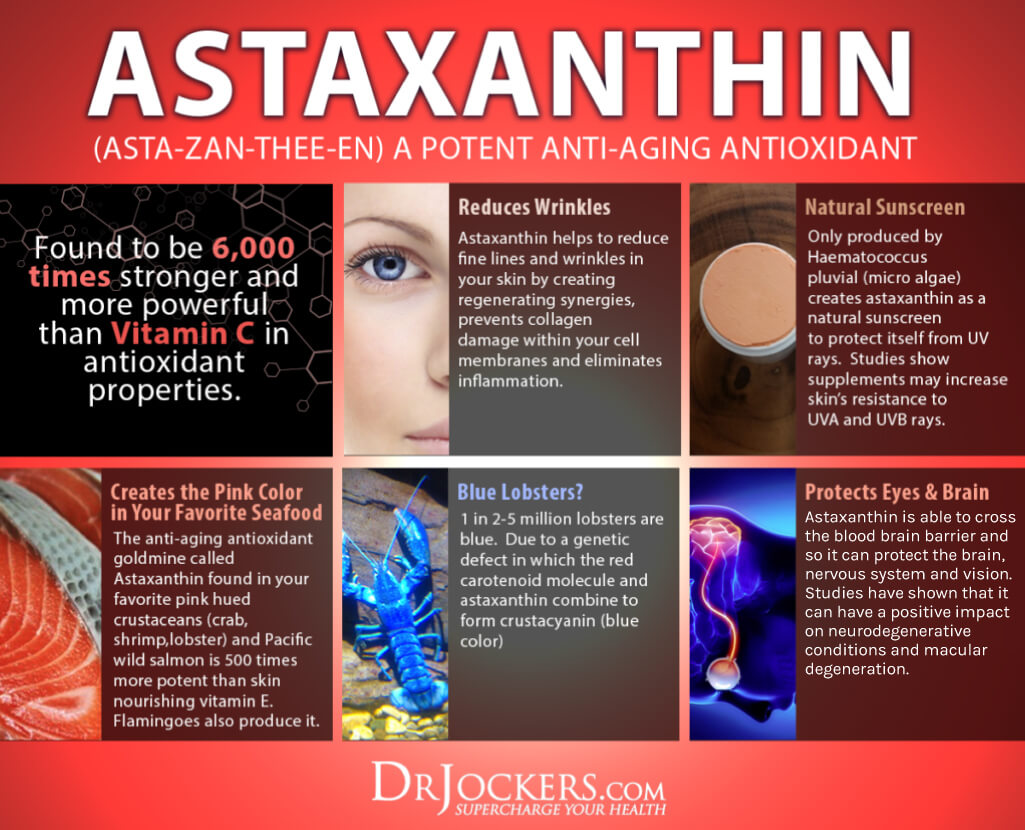
Autolyzed Yeast Extract:
Food Sources: A variety of processed foods.
Intended Purpose: Added as a flavor enhancer.
Safety Concern: People sensitive to consuming glutamate should avoid autolyzed yeast extract because it does contain natural levels of MSG.
Benzoate (Sodium Benzoate):
Food Sources: Milk, meat, drinks, salad dressings, fruit jams, pickles, condiments, low-sugar foods, cereal, syrups, and margarine.
Intended Purpose: Food preservative with anti-bacterial and anti-fungal properties when present in acidic conditions.
Safety Concern: Benzoate is shown to inhibit digestive enzymes which don’t make this ingredient conducive to being added to foods. Individuals can experience symptoms related to improper digestion including headaches, and gastrointestinal upset, and can trigger asthma, hyperactivity, and ADHD symptoms.
It is best to avoid this food additive.
BHA & BHT:
Food Sources: Crackers, cereals, sausages, dried meats, and added fat foods.
Intended Purpose: Preservatives added to foods containing oils susceptible to becoming quickly rancid. Referred to as added antioxidants because their structures resemble that of the naturally fat soluble antioxidant, vitamin E.
Safety Concern: For a long time considered safe, recent studies suggest that these food additives likely form carcinogenic compounds when broken down in the body.
BHA and BHT are produced from petroleum sources. The WHO (World Health Organization) International Agency for Research on Cancer classifies BHA as a possible human carcinogen. It is best to eliminate BHA and BHT from your diet. (2, 10)
Calcium Chloride:
Food Sources: Pickles and canned vegetables and fruits.
Intended Purpose: Preservative that does not contribute sodium to foods and added drying agent.
Safety Concern: Considered a salt, calcium chloride is generally harmless and toxic free. However, if you find you are sensitive to this compound, it may be best for you to avoid it.
Canthaxanthin:
Food Sources: Egg yolk, salmon, chicken and trout.
Intended Purpose: Coloring agent which attributes a golden-yellow appearance.
Safety Concern: Studies link this chemical to retinal damage and contains just the opposite health properties that natural forms of beta-carotene. Avoid this chemical by buying eggs from local trusted farmers and choosing wild caught fish.
Caramel Color
Food Sources: Balsamic vinegar, beverages, and baked goods.
Intended Purpose: Coloring agent that does not compromise the taste of the product.
Safety Concern: Caramel color is not regulated by the FDA within the guidelines of a “certifiable” color additive.
Unlike colors that are derived from coal and petroleum sources which must comply with specific regulations, caramel color can be produced using plant, animal, and mineral sources. The FDA does state that color additives can cause inflammatory responses related to allergies, but they do suggest that these symptoms are rare occurrences. (1)
The Center for Science in the Public Interest recommends avoiding all food dyes in their entirety. The production of caramel color undergoes a reaction that browns the substances and introduces heat and chemical solvents such as ammonia and sulfites to the manufacturing process (10).
Although studies that warn of the hazards of caramel color consumption generally test the effects of large quantities, there is no denial of the prevalence of such additives in the American diet.
One of the greatest regularly consumed sources of caramel color is soda beverages. The long term exposure risk to ingesting caramel color in large quantities is concerning and is best avoided.
Carrageenan:
Food Sources: Some dairy and many non-dairy products, lunch meats, and baby formula.
Intended Purpose: Thickening agent in foods and beverages used to replace fat.
Safety Concern: Carrageenan is extracted from certain seaweeds which can be easily absorbed by humans. This additive does pose health risks as it can be consumed in significant amounts and broken down in the body.
Its degraded form may be a possible human carcinogen and aggravate other chemicals with increased cancer risks in the body. Individuals with gastrointestinal (GI) complications and diseases can develop a weakened immune system. (2, 10)
It is best to avoid this food additive entirely, especially in baby formulas.
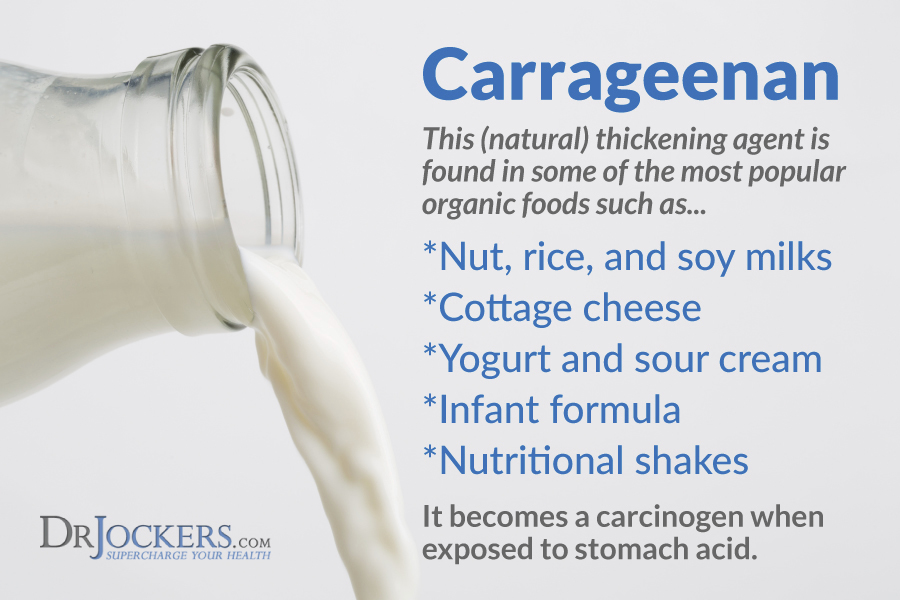
Citric Acid:
Food Sources: Canned products.
Intended Purpose: Color preservative, and pH stabilizer. Also referred to as an added antioxidant.
Safety Concern: This food additive may be safe for some individuals but can cause health risks. Citric acid is produced from corn, likely GMO, which also contains naturally sourced MSG. Citric acid can trigger allergic responses and its health risks are dependent on each individual’s health.
Diacetyl:
Food Sources: Unsalted butter and flavorings.
Intended Purpose: A food enhancer designed to contribute a buttery taste and smell.
Safety Concern: As briefly mentioned earlier, this food additive may cause health risks with long term exposure relating to inhalation of the chemical but is otherwise generally safe (5). Listed under the broad classification as “natural flavorings”, diacetyl is best avoided when you consume products containing real butter and avoid unknown or unrecognizable ingredients.
EDTA:
Food Sources: Canned goods, salad dressings, condiments, soda and non-nutritive sweeteners.
Intended Purpose: A chelating ingredient designed to preserve color and flavor by removing toxic metals that may be leached into the food during canning.
Safety Concern: There is some safety concern for the consumption by some individuals. For instance, EDTA may exacerbate the effects of individuals already predisposed or susceptible to low levels of magnesium and potassium in the body.
Individuals who have kidney disease, low blood pressure, or are taking medications that may interact with EDTA should understand the risks associated with excessive EDTA in the diet. Otherwise, EDTA is considered safe for consumption. (2, 10)
Emulsifiers:
Food Sources: Low calorie fats such as butter and margarine, mayonnaise, ice cream, salad dressings, and bread products.
Intended Purpose: Emulsifiers are food additives intended to increase shelf life by allowing non-mixing agents like oil and water to easily combine.
Safety Concern: Emulisifers are produced from vegetable fats, glycerol, and organic acids. Common ingredients that serve this purpose include agar, albumin, alginates, casein, egg, yolk, glycerol, monostearate, xanthan gums, Irish moss, lecithin, and soap.
Some of these food additives are expounded upon in their designated sections. These additives are generally safe but can trigger adverse reactions in those with food sensitivities.
Ferrous Gluconate:
Food Sources: Canned black olives.
Intended Purpose: Coloring agent.
Safety Concern: Used as an iron supplement in pill form and utilized by manufacturers to produce a uniform color in black olives. This food additive is considered safe.
Grape Must:
Food Sources: Vinegar.
Intended Purpose: Flavoring agent.
Safety Concern: Grape must can also be referred to as concentrated grape juice and is considered safe.
Guar Gum:
Food Sources: Coconut milk.
Intended Purpose: Thickening agent.
Safety Concern: Guar gum is the healthier alternative to xanthan gum. It is made from the guar bean which is an insoluble form of fiber.
Guar gum is typically considered safe for individuals unless they experience symptoms of digestive disorders. Those with irritable bowel syndrome (IBS) or sensitivity to FODMAPs such as fructose, lactose, and fructans should avoid guar gum. (2, 10)
High Fructose Corn Syrup:
Food Sources: Dressings, soda, yogurt, snacks, bread, and numerous processed foods.
Intended Purpose: Contributes moisture and sweetness to foods and functions as a preservative.
Safety Concern: The abundance and increased consumption of high fructose corn syrup in our food has raised concern for this food additive. Its consumption in large quantities is associated with heart disease by raising cholesterol and triglyceride levels.
In very small quantities this food additive may be safe to consume but is best avoided given its prevalence in food. (2)
Hydrolyzed Vegetable Protein:
Food Sources: Soup mixtures, seasoning packages.
Intended Purpose: Flavor enhancer.
Safety Concern: This food additive is not considered safe because it is derived from soy and contains MSG.
Inosinic Acid:
Food Sources: Dressings, condiments, seasonings, bullions, and snacks.
Intended Purpose: Flavor enhancer.
Safety Concern: Inosinic acid is generally safe to consume. However, this food additive is often used with added MSG which you should avoid.
Inulin:
Food Sources: Salad dressings, margarine, baked goods, dairy foods, and frozen desserts.
Intended Purpose: Used as a bulking agent and source of fiber.
Safety Concern: Inulin is naturally derived and unless you have GI disturbances such as a sensitivity to FODMAPs it is safe for consumption. In fact, inulin may contribute to health by feeding the good bacteria in the gut and stabilizing blood sugar levels.
Lactic Acid:
Food Sources: Olives, cheeses, butter, frozen desserts, carbonated fruit flavored drinks, and yogurt beverages.
Intended Purpose: Preservative which regulates pH and inhibits spoilage.
Safety Concern: Lactic acid is a byproduct of bacteria that digest the sugar lactose. Lactic acid gives Kefir its tangy taste and the tartness flavor of frozen desserts. Safe for consumption.
Liquid Smoke:
Food Sources: Meat products like bacon, canned fish, dairy products, alcoholic beverages, cereal products, processed vegetables, fruits, fats, and oils.
Intended Purpose: Provides barbeque flavoring.
Safety Concern: Liquid smoke has been found in studies to increase heart weight, reduce lung weight, and decrease white blood cell count. Liquid smoke is produced from the smoke from the beech tree woodchips which is then converted into a liquid. Ethanol mixtures are used to condense and produce this additive. (2, 10)
One study found that the normal level of its consumption ranges from 41 to 76 mg/kg bw. However, the food additives originally safety guidelines were not recommended for consumption exceeding 50 mg/kg bw.
Liquid smoke raised concern for genotoxicity in humans and is not considered safe. (7)
Methylcyclopropene:
Food Sources: Apples and bananas.
Intended Purpose: Chemical preservatives designed to prevent the over-ripening effects of natural foods.
Safety Concern: This chemical is a gaseous substance that is sprayed into crates containing such goods as apples. Methylcyclopropene is better known as “Smart Fresh” and keeps apples appearing fresh for up to a year and bananas for up to one month. (2)
This pesticide has been shown in toxicological studies to cause respiratory problems when inhaled and eye irritation when in physical contact with the substance. Few studies have tested the health hazard this chemical poses to human consumption. Regardless, the FDA has labeled methylcyclopropene as a generally safe substance.
Unfortunately, even organic produce may have been sprayed or dipped in the chemical because of the general consensus that it provides a very low risk to consumers. This food additive may be safe, but if you prefer to avoid it you are best speaking and buying from a local farmer.
MSG:
Food Sources: Dressings, condiments, seasonings, bouillon, frozen entrees, and snacks.
Intended Purpose: Used as a flavor enhancer and meat tenderizer.
Safety Concern: MSG triggers allergies recognized by what is known as “Chinese Restaurant Syndrome”. Generally, reactions to MSG are short term but can cause cell damage. MSG can increase the risk of cognitive decline resulting from damaging nerve cells in the brain. People at risk of an allergic reaction should avoid its consumption. (2, 10)
Common symptoms associated with an MSG allergy include headache, nausea, numbness, and burning in forearms and the neck as well as changes in heart rate, ability to breathe, and wheezing.
Provided the evidence of adverse health reactions it causes, MSG may be best avoided by all regardless of sensitivity.

Natamycin:
Food Sources: Cheese, yogurt, and sausages.
Intended Purpose: Preservative which acts as an antifungal agent to prevent spoilage.
Safety Concern: When consumed within the recommended limits, natamycin does not seem to affect gut health or contribute to any adverse side effects. This food additive is produced by bacteria and although it is not found on Whole Foods’s approved ingredient list, it is considered safe by most organizations including the more critical European Union. (2, 10)
Natural Flavors:
Food Sources: Found in almost all industrialized processed goods.
Intended Purpose: These food additives are flavoring agents or flavor enhancers.
Safety Concern: Natural flavoring encompasses a countless number of food additives. Unless you have invested research into the product’s manufacturer to trust the quality of ingredients, it is best to avoid ingredients so vague.
Nisin:
Food Sources: Dairy, meat, egg products, salad dressings, and canned goods.
Intended Purpose: Preservative with antibacterial effects to prevent pathogens from spoiling food.
Safety Concern: Nisin is produced from the fermentation process of a specific bacterium. At this time, nisin does not appear to contribute to any antibiotic resistance effects and is considered safe. (8)
Olestra:
Food Sources: Lay’s Light Chips, Pringles Light chips, and other low caloric snacks.
Intended Purpose: Synthetic fat designed to pass through the digestive tract so that products can be labeled “fat free” or “low-fat”.
Safety Concern: The FDA requires manufacturers to put a warning label on products that contain this additive. It is a fake fat that is associated with “anal leakage” and GI complications such as gas, bloating, and cramps.
Olestra can also interfere with the absorption of healthy fat soluble substances into the body from fruits and vegetables and should be avoided. (10)
Papain:
Food Sources: Meat products.
Intended Purpose: Meat tenderizer.
Safety Concern: Unless allergic to the enzyme, papain originates from papayas and is considered safe.
Partially Hydrogenated Oils:
Food Sources: Fat, oil, and shortening products such as margarine, crackers, fried foods, baked goods, frosting, and microwave popcorn.
Intended Purpose: Alternative fat to saturated fats.
Safety Concern: Man-made fat is cheaper to produce and use instead of butter, so manufacturers created hydrogenation. The process of hydrogenation adds hydrogen to a compound, thereby creating a denser oil.
These oils promote trans-fats and have contributed to slowed metabolism, cancer, diabetes, and heart disease.
This food additive is considered dangerous and not safe. (10)
Phosphates, Phosphoric Acid:
Food Sources: Meats, cheeses, soda, egg products, and other dairy goods.
Intended Purpose: Meat tenderizer.
Safety Concern: These synthetic food additives are absorbed in significant concentrations in the gut and are not considered safe. They are linked to cardiovascular and kidney complications making it especially critical for those with a predisposition to kidney problems to avoid.
Synthetic phosphorous chemicals such as these increase the risk of heart attack by increasing the risk of arterial plaque build-up. (2, 10)
Phosphorous acid is further associated with an increased risk for osteoporosis and may promote other health complications because it inhibits the absorption rate of calcium into the body.
Potassium Bromate:
Food Sources: Flour and bread products.
Intended Purpose: Increases volume in foods.
Safety Concern: Potassium bromate is known to cause cancer in animals and is not considered safe. California requires product labels to contain a cancer warning on foods that contain potassium bromate. (2, 10)
Potassium Chloride:
Food Sources: Found in salty foods such as soups, bouillon, and broths.
Intended Purpose: Salt alternative flavoring agent.
Safety Concern: Although potassium chloride is considered safe in limited quantities, high consumption increases the risk for dehydration and can be toxic.
Sodium Lactate:
Food Sources: Meat and poultry products.
Intended Purpose: Preservative that buffers food pH by inhibiting bacteria growth and flavoring agent.
Safety Concern: Sodium lactate is typically produced from genetically engineered sugar beets or corn. It is best to make sure this ingredient is labeled organic for this reason and otherwise contributes no significant health complications.
Sodium Metabisulfite:
Food Sources: Fruit juices and canned tomatoes.
Intended Purpose: Food preservative and also added antioxidant.
Safety Concern: As with other sulfites, limited consumption of sodium metabisulfite may be safe but you may choose to avoid depending on your sensitivity.
Sodium Nitrate & Sodium Nitrite:
Food Sources: Bacon, hot dogs, deli meats, cereals, beer, wine and naturally found in lettuce, spinach, celery, and other fruits.
Intended Purpose: Preservatives with antimicrobial properties and coloring agents.
Safety Concern: These food additives are not considered safe because they are broken down in the body into carcinogenic compounds and combine readily with nitrosamines.
Nitrosamines are strong cancer causing compounds that are produced during the heating process. (2, 10)
High levels can affect oxygen supply to tissues, cause drops in blood pressure, and heart rate, and cause cramping, headaches, vomiting, and in some instances death. The International Agency for Research on Cancer does classify these compounds as probably carcinogenic to humans. (9)
When necessary, consider natural sources of sodium nitrate in products such as foods listing celery juice. Due to the threat of the cancer compounds formed when applied to heat, it is best to avoid these food additives entirely.
Sorbates:
Food Sources: Pickles, cheeses, dried fruits, and wine.
Intended Purpose: Preservative with antimicrobial benefits.
Safety Concern: Unless you find you are allergic to sorbates, these food additives are generally considered safe for consumption.
“Spices”:
Food Sources: Processed foods, broths, canned fruits and veggies, condiments, snacks, baked goods, etc.
Intended Purpose: Flavoring and coloring food additives.
Safety Concern: The ingredient “spices” can represent unlimited spice flavorings and combinations. If you are allergic to a specific spice, it is best for you to contact the food manufacturer for a list of ingredients. Spices are otherwise safe for consumption.
Sulfites:
Food Sources: Grapes, wine, dried fruit, processed potatoes, and some “fresh” shrimp.
Intended Purpose: Preservative to prevent discoloration and to preserve “freshness”.
Safety Concern: This chemical additive is sprayed on food to inhibit bacterial growth and is also naturally occurring in some foods. Sulfites can cause severe allergic reactions such as anaphylactic response and should not be given to infants. Generally, sulfites are considered safe for consumption unless you are allergic. (10)
Soy Lecithin:
Food Sources: Chocolate, ice cream, margarine, and baked goods.
Intended Purpose: Emulsifier used to prevent separation of ingredients and spattering when fried.
Safety Concern: Generally, lecithin is a safe food additive when it is not derived from soy. It is a vital source of choline, essential fatty acids, and antioxidants and may improve liver function, cardiovascular flow, and nervous system function and perhaps prevent cognitive decline.
Soy lecithin is the most popular and widespread form of this additive on the market because of its large difference in cost.
Soy lecithin requires the use of harmful chemicals during the extraction process where as sunflower lecithin is cold pressed much like many healthy olive oils. Most soy is also most often obtained from genetically altered crops and may contribute to illness.
Choose sunflower lecithin to aid in reducing oxidative stress, increase glucose metabolism in the brain, and promote nervous system function. Avoid the unsafe consumption of soy lecithin. (3, 10)
Sucralose:
Food Sources: Products made with Splenda include baked goods, beverages, frozen desserts, dairy products, applesauce, protein bars, gum, sauces, syrups, and candy.
Intended Purpose: Used as a no-calorie sweetener to replace sugar.
Safety Concern: Sucralose is synthesized by replacing the hydrogen-oxygen bonds in sugar with chlorine atoms. This design is intended to confuse the body so that it will not be recognized as a carbohydrate and will not be broken down.
Sucralose may not directly change your calorie intake but it has been shown to change the health of your gut microbiome, increase the toxic load you consume and may change your body’s metabolic response (11).
Such findings of health risks associated with sucralose consumption highlights the food additive as dangerous and to be avoided.
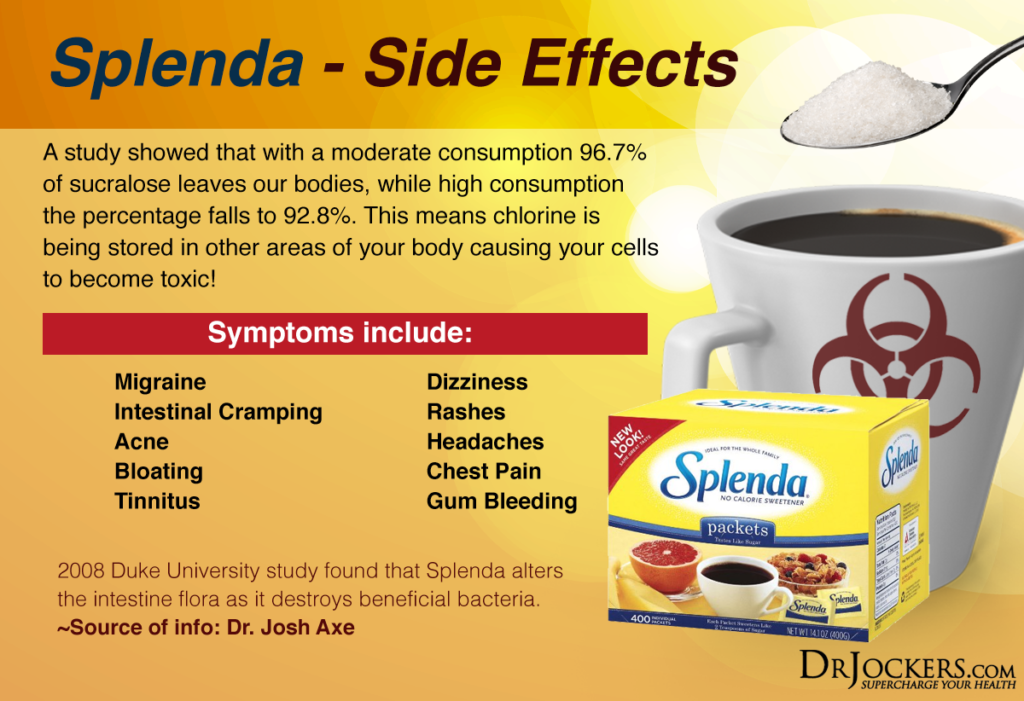
Textured Vegetable Protein:
Food Sources: Processed meats.
Intended Purpose: Extender added to bulk up size of food.
Safety Concern: Derived from soy and for the same reasons listed within other ingredients, textured vegetable protein is not considered safe.
Titanium Dioxide:
Food Sources: Cream cheese, candy, and gum.
Intended Purpose: Coloring and textural additive, also sometimes used for its anti-caking benefits.
Safety Concern: Even Dunkin Donuts removed this food additive from the production process. It is recognized as a safe food additive by the FDA but limited toxicological studies exist which have focused on the risk factors involving consumption of these nanoparticles.
Until more research supports the use of titanium dioxide in foods, it may be best avoided.
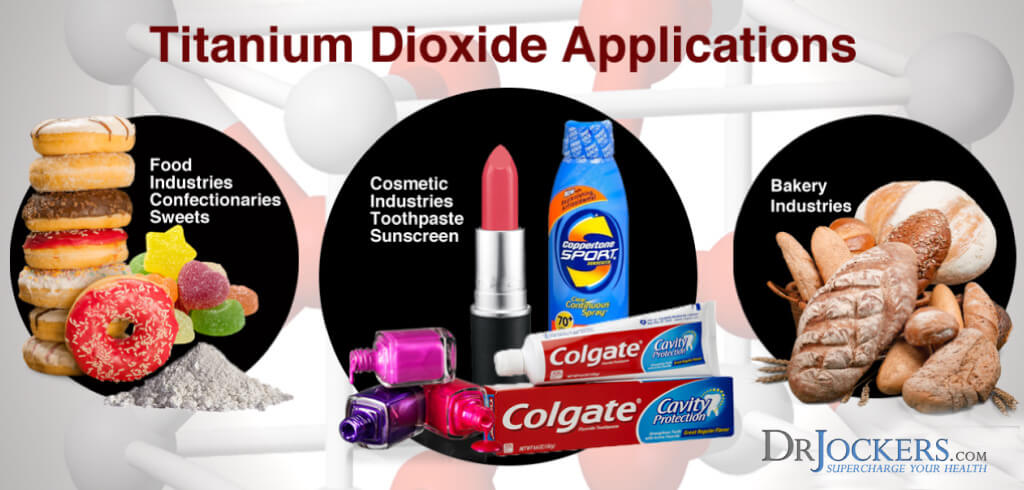
Transglutaminase:
Food Sources: Meat and seafood.
Intended Purpose: Acts as a “gluing” agent.
Safety Concern: Transglutaminase is a food additive that should be avoided but not because of the additive itself. Transglutaminase implies that the meat or seafood product has been glued together.
The inside of the steak may originally have been the outside of meat which is significantly concentrated with pathogens. This process which requires the use of this ingredient promotes bacterial contamination.
Xanthan Gum:
Food Sources: Alternative milk beverages like coconut and almond milk, sauce, and salad dressings.
Intended Purpose: Emulsifying agent and product thickener.
Safety Concern: Xanthan gum is a by-product of a fermentation process of bacteria. These bacteria break down sugars most commonly from corn. Xanthum gum is perfectly safe for most as long as it is non-GMO. (2, 10) If you have problems with FODMAPS, you may have challenges with xanthum gum.
If you want to work with a functional health coach, I recommend this article with tips on how to find a great coach. On our website, we offer long-distance functional health coaching programs. For further support with your health goals, just reach out—our fantastic coaches are here to support your journey.
Sources for this Article Include:
1. FDA: Color Additives Link Here
2. FDA: Everything Added to Food in the United States (EAFUS) Link Here
3. More MI, Freitas U, and Rutenberg D. Positive Effects of Soy Lecithin-Derived Phosphatidylserine plus Phosphatidic Acid on Memory, Cognition, Daily Functioning, and Mood in Elderly Patients with Alzheimer’s Disease and Dementia. Adv Ther. 2014; 31: 1247-1262. PMCID: 4271139
4. Islam SU, Rather LJ, Mohammad F. Phytochemistry, biological activities and potential of annatto in natural colorant production for industrial applications – A review. J Adv Res. 2016 May; 7(3): 499-514. PMCID: 4856788
5. Curwin BD, Deddens JA, and McKernan LT. Flavoring exposure in food manufacturing. J Expo Sci Environ Epidemiol. 2014 Jul; PMCID: 4520397
6. American Cancer Society Link Here
7. EFSA Panel on Food Contact Materials, Enzymes, Flavorings and Processing Aids. EFSA J. 2010; 8(1): 1396. Link Here
8. Hansen JN. Nisin as a model food preservative. Crit Rev Food Sci Nutr. 1994; 34(1): 69-93. PMID: 8142045
9. CDC: Nitrate/Nitrite – ToxFAQs Link Here
10. Center for Science in the Public Interest: Chemical Cuisine Link Here
11. Jang W, Jeoung NH, and Cho KH. Modified Apolipoprotein (apo) A-I by Artificial Sweetener Causes Severe Premature Cellular Senescence and Atherosclerosis with Impairment of Functional and Structural Properties of apoA-I in Lipid-Free and Lipid-Bound State. Mol Cells. 2011 May; 31(5): 461-470. PMCID: 3887604
Other Sources Include:
https://www.wholefoodsmarket.com/about-our-products/quality-standards/food-ingredient
https://www.pccnaturalmarkets.com/issues/statements/organics/org_sodium_lactate_120709.html
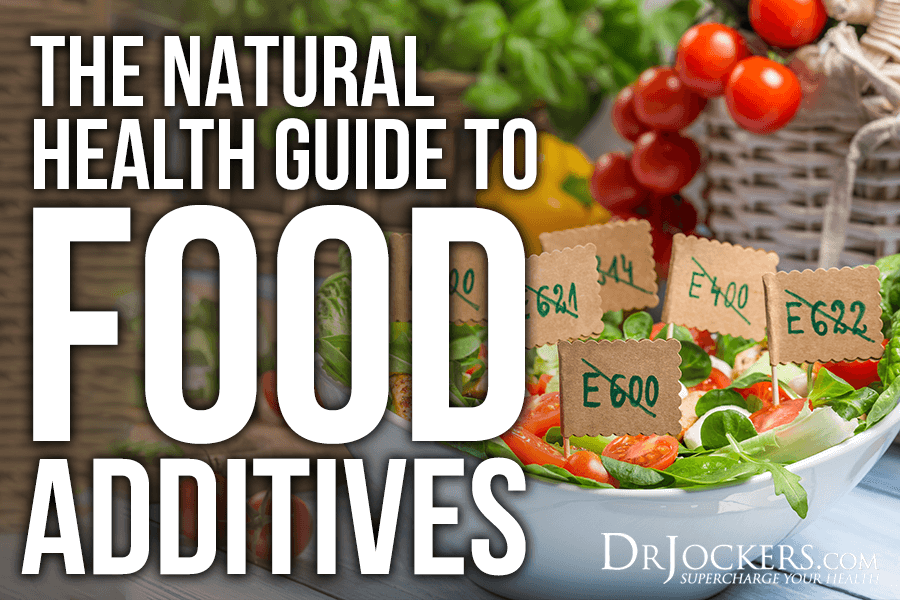
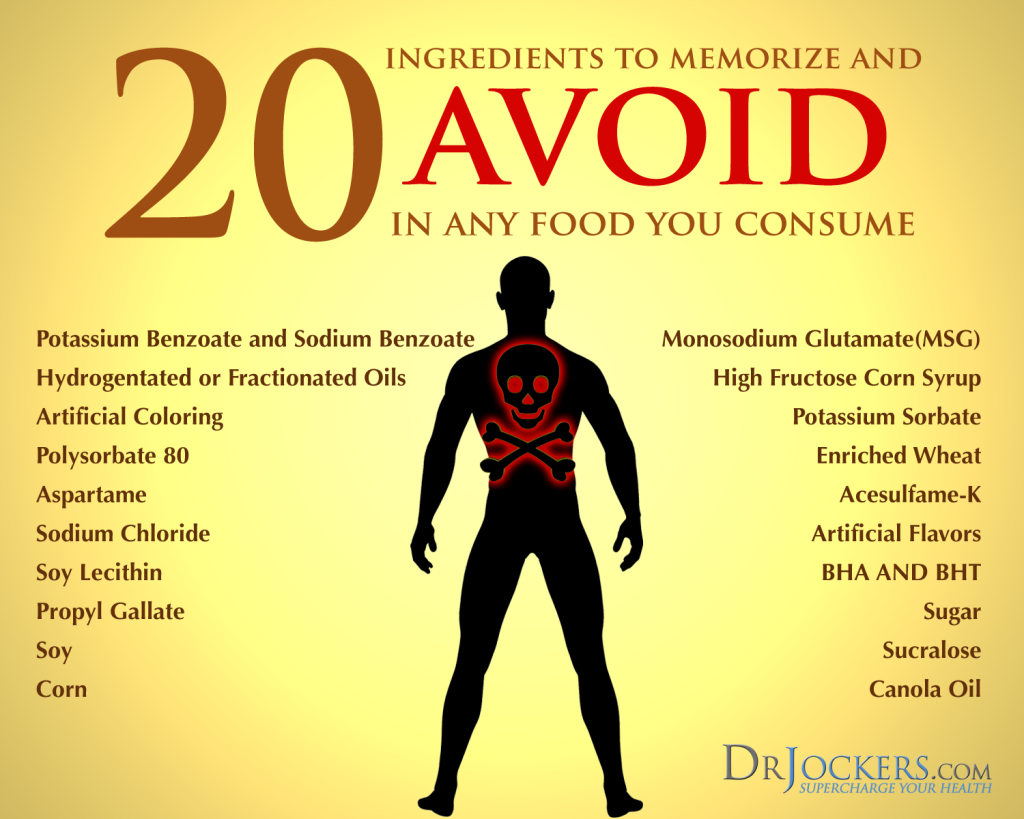
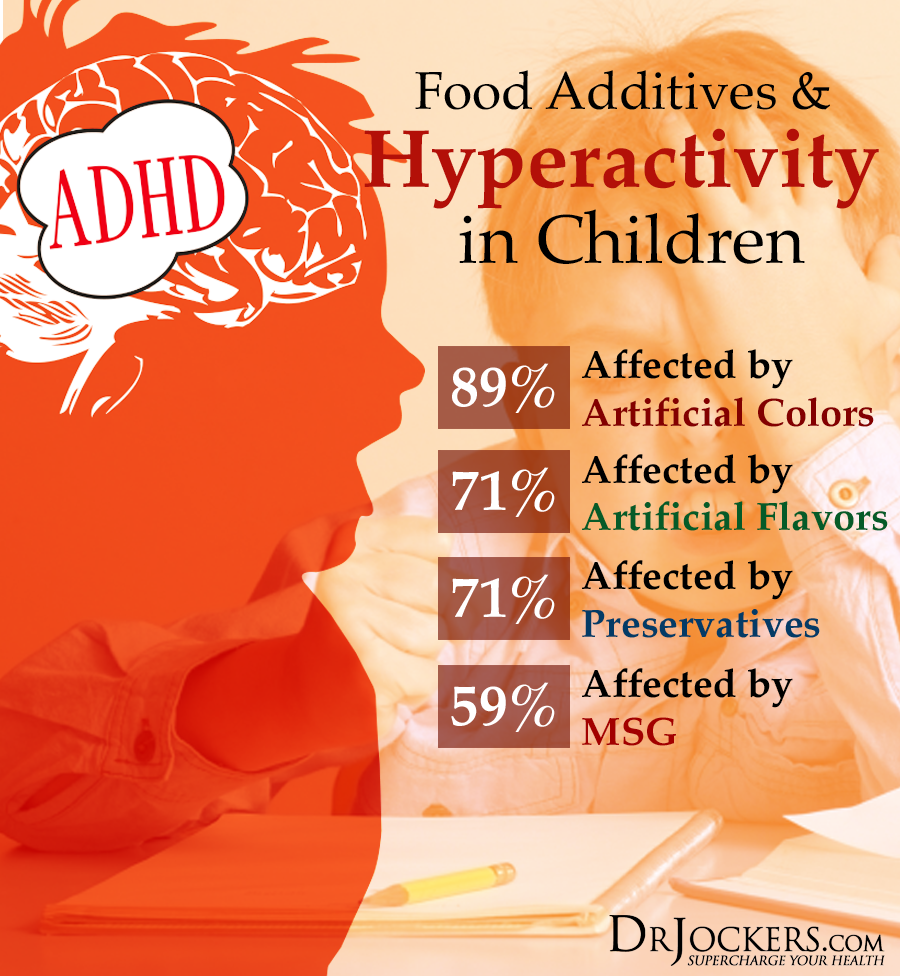





Interesting article – very comprehensive. Thanks!
I’m over 60, diagnosed with IBS about 30 years ago. It has been consistent throughout my life and has limited me professionally, although I was able to work full time up until retirement.
I just wanted to note that my particular version of IBS is violently intolerant of carrageenan, Xanthan gum, inulin, psyllium, or natamycin. I’ll be sidelined for days if even one of these things is in something I eat – and I have the dechallenge/rechallenge experiences to prove it.
OTOH, if I take any one of these: marshmallow root, bentonite/montmorillite, or polycarbophil – or strangely enough, guar gum – they mitigate things and speed recovery.
Am leaving this comment because YMMV, and the European Union has apparently seen more people with natamycin sensitivity than the US has. Also, the psyllium and natamycin sensitivities can be insidious; it took a long time and much wasted suffering before I figured these two out. If someone else can avoid being housebound for months based on this, then not all that suffering was pointless.
Thank you for that valuable insight!
Oh, MSG’s fine